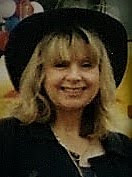The Dangers of
Adoption
Little did Dean and Betty know, when they took home their
new son what was in store for them. Over the next forty plus
years they would discover loving tolerance, generosity to their
child, and ignoring the problems he caused, was not a strategy which
would bring them the joy they had expected.
If they had been able to look forward in time and, perhaps, read
the article posted in the New York Times Magazine on May 12th of this
year, titled, "Can
You Call a 9-Year-Old a Psychopath?," they
might have felt a chill as they looked into the
small face nestled in their arms.
Today, a consulting psychiatrist, such as Dan Waschbusch, a
researcher at Florida International University, could have provided them with terminology which makes chilling sense of the behavior
exhibited by the son they so wanted.
If such a therapist in 1950, who could have used a combination of
psychological exams and teacher- and family-rating scales, to assess
their son, their lives might have been very different. Or if Kent Kiehl's work using the fMRI machine used to identify the Amygdala in the human brain as the reason at least some individuals lack a conscience, sooner, they might have been better prepared for what was to come.
Instead of
decades of chaos, capped with the indifference of their grandson as Betty laid dying,
they might have been able to leave their considerable estate to
people who loved them, instead of viewing them, like the predators
they are, only as the source of wealth.
Humanity has always sensed the presence of the psychopathic, the
demonic presence of these individuals being articulated in the iconic
images of Satan, Lucifer, and other inhuman entities. But it is,
perhaps, the most frightening to see this in the children you love.
Today, humanity stands on the threshold of an understanding which
promises to change our world, making it possible to identify these
individuals early and either treat or quarantine them so they can do
no harm.
Based on our growing understanding of neurobiology, which allows
us to understand the internal function of the brain, these tools
include the Inventory of Callous-Unemotional Traits, the Child
Psychopathy Scale and a modified version of the Antisocial Process
Screening Device. Designed to measure the cold, predatory
conduct most closely associated with adult psychopathy, a term deemed
essentially identical to “sociopath,” these innovations come in
response to the growing awareness of the impact and nature of
psychopathy and other social disorders, Callous-Unemotional Traits,
among them.
Today, these traits are being recognized in children as young as
three. Callous-Unemotional Traits, or C. U., manifest in
obvious ways. “Paul Frick, a psychologist at the University of New
Orleans who has studied risk factors for psychopathy in children for
two decades, described one boy who used a knife to cut off the tail
of the family cat bit by bit, over a period of weeks. The boy was
proud of the serial amputations, which his parents initially failed
to notice. “When we talked about it, he was very straightforward,”
Frick recalls. “He said: ‘I want to be a scientist, and I was
experimenting. I wanted to see how the cat would react.’ ”
In the same article Frick noted another case, which has received
more public attention. In this instance Jeffrey Bailey, then 9
years of age, shoved a toddler into the deep end of a motel swimming
pool in Florida. As the little boy struggled, sinking to the bottom,
Bailey pulled up a chair to observe. Bailey explained to the police
afterward he was curious to see someone drown. He showed no emotional
reaction when taken into custody, and was untroubled by the prospect
of jail. He positively enjoyed being the center of attention.
Psychopathy presents on a gradient which, experts believe, is
complex, relating to the specific individual. As with all gradients,
most psychopaths are not as severely affected as the few who come to
our attention through the shocking nature of their behavior. But
their behavior can be, none-the-less, abnormal, abusive, and heart-rending.
Evidence is mounting that the traits which cause the adult to be
psychopathic can be inherited, explaining how Richard Lee Barteaux,
who never saw his oldest daughter, and had little or nothing to do
with raising his other two children, impacted their lives.
The ramifications for us are enormous and demand study and action.
The Barteauxs adopted a baby but this one act has impacted a
multitude of other individuals, the ripples of that act sending shock
waves through time to present day.
This site tracks the behavior of Richard Lee Barteaux, Senior and
his three biological children.
Carolyn Anne Barteaux (AKA Morgan Pillsbury Gell)
Richard Lee Barteaux, Jr.
Angel Barteaux
Carolyn Anne Barteaux (AKA Morgan Pillsbury Gell)
Richard Lee Barteaux, Jr.
Angel Barteaux


Just found this!
ReplyDeleteFound. What?!
Delete